As the automotive landscape continues to evolve towards electrification, the competition among electric SUVs is heating up. Two exciting contenders in this segment are the BMW iX1 and the Volvo EX30. Both compact electric SUVs offer modern design, impressive performance, and a range of innovative features that appeal to a growing segment of eco-conscious consumers. In this comparison, we delve into their technical specifications, innovative technologies, and driving dynamics.
BMW iX1 vs Volvo EX30 – Performance, range & efficiency compared
Two cars, one duel: BMW iX1 meets Volvo EX30.
Which one wins in performance, efficiency and value for money? Find out now!
Design and Dimensions: Making a Statement
The BMW iX1, with its sleek lines and muscular stance, measures 4500 mm in length, 1845 mm in width, and stands 1616 mm tall. This distinctly BMW vehicle combines functional aesthetics with sporty allure, embodying the brand's iconic design language.
In contrast, the Volvo EX30 takes a more minimalistic and Scandanavian approach. Measuring 4233 mm in length, 1837 mm in width, and 1549 mm in height, it emanates a modern vibe that is both sophisticated and practical. The EX30's dimensions may be more compact, but its design maximizes interior space, offering comfort for up to five passengers.
Powertrain and Performance: Pure Electric Thrills
Under the hood, the BMW iX1 is available in two configurations: the sDrive20 and the xDrive30, delivering power outputs of 204 HP and 313 HP, respectively. The electric range varies between 436 km and 463 km, making it a dependable choice for urban commutes and longer journeys alike. With an acceleration time of 0-100 km/h in just 8.6 seconds for the sDrive and a thrilling 5.6 seconds for the xDrive, the iX1 is more than just a stylish SUV; it’s also a sporty performer.
On the other hand, the Volvo EX30 offers more aggressive power training options. The base model produces 272 HP, while the top-tier variant boasts a robust 428 HP. The electric range spans from 339 km to an impressive 476 km, showcasing Volvo's innovation in battery efficiency. The EX30 excels particularly with its performance, achieving a staggering 0-100 km/h in as little as 3.6 seconds, making it one of the quickest in its class.
Battery and Charging: Ready for the Road
Battery technology is a crucial element of any electric vehicle, and both models deliver impressive specifications. The iX1 comes with a battery capacity of either 64.8 kWh or 77 kWh, while the EX30 offers options of 49 kWh or 65 kWh. The BMW's higher capacity allows for longer distances, while the EX30’s various options provide flexibility for different consumer needs.
In terms of energy consumption, the iX1 performs admirably with a consumption rating of 15.8 kWh/100 km, though the EX30’s 17.0 kWh/100 km is still competitive. With CO2 emissions classified as "A" for both models, they both represent a step towards sustainability and responsible driving.
Innovative Features and Technology: A Futuristic Experience
Both vehicles are equipped with cutting-edge technology that enhances the driving experience. BMW's iX1 boasts the latest iDrive system, complete with an intuitive infotainment system that supports wireless Apple CarPlay and Android Auto. Advanced driver assistance systems ensure safety and convenience, making urban driving less stressful.
Volvo, known for its commitment to safety, incorporates an impressive suite of safety technologies in the EX30. Its digital interface is user-friendly, featuring a large touchscreen with over-the-air update capabilities, ensuring that the car remains up-to-date with the latest software enhancements and safety features.
Final Thoughts: Choosing Your Electric Companion
When comparing the BMW iX1 and Volvo EX30, your choice ultimately depends on your personal preferences and driving needs. The iX1 offers a larger electric range and a dynamic driving experience, while the EX30 thrills with its remarkable acceleration and unique design. Both are formidable entries in the electric SUV market, embodying the future of mobility.
Whether you prioritize performance, range, design, or advanced technology, each model stands as a testament to what the automotive world has to offer in this electric revolution. So, which one will be your electrifying companion on the road ahead?
Here’s where it gets real: The technical differences in detail
Costs and Efficiency:
Price and efficiency are key factors when choosing a car – and this is often where the real differences emerge.
Volvo EX30 has a evident advantage in terms of price – it starts at 33000 £, while the BMW iX1 costs 41800 £. That’s a price difference of around 8837 £.
In terms of energy consumption, the advantage goes to the BMW iX1: with 15.80 kWh per 100 km, it’s barely noticeable more efficient than the Volvo EX30 with 17 kWh. That’s a difference of about 1.20 kWh.
As for range, the Volvo EX30 performs barely noticeable better – achieving up to 476 km, about 13 km more than the BMW iX1.
Engine and Performance:
Power, torque and acceleration say a lot about how a car feels on the road. This is where you see which model delivers more driving dynamics.
When it comes to engine power, the Volvo EX30 has a distinct edge – offering 428 HP compared to 313 HP. That’s roughly 115 HP more horsepower.
In acceleration from 0 to 100 km/h, the Volvo EX30 is clearly quicker – completing the sprint in 3.60 s, while the BMW iX1 takes 5.60 s. That’s about 2 s faster.
There’s no difference in top speed – both reach 180 km/h.
There’s also a difference in torque: Volvo EX30 pulls slight stronger with 543 Nm compared to 494 Nm. That’s about 49 Nm difference.
Space and Everyday Use:
Beyond pure performance, interior space and usability matter most in daily life. This is where you see which car is more practical and versatile.
Both vehicles offer seating for 5 people.
In curb weight, Volvo EX30 is minimal lighter – 1840 kg compared to 1940 kg. The difference is around 100 kg.
In terms of boot space, the BMW iX1 offers noticeable more room – 490 L compared to 318 L. That’s a difference of about 172 L.
In maximum load capacity, the BMW iX1 performs distinct better – up to 1495 L, which is about 495 L more than the Volvo EX30.
When it comes to payload, BMW iX1 noticeable takes the win – 495 kg compared to 390 kg. That’s a difference of about 105 kg.
Who wins the race?
The Volvo EX30 proves to be secures victory with a clear margin and therefore becomes our DriveDuel Champion!
Volvo EX30 is the better all-rounder in this comparison.
 @ Volvo Cars
@ Volvo Cars
Volvo EX30
BMW iX1
The BMW iX1 wraps BMW's electric ambition into a compact SUV package that feels unexpectedly premium, with sharp handling and a crisp, modern cabin that keeps the driver in charge. It's ideal for buyers who want a stylish, quiet daily driver with useful practicality and tech-savvy touches — plus enough character to make the commute feel less like a chore and more like a short joyride.
details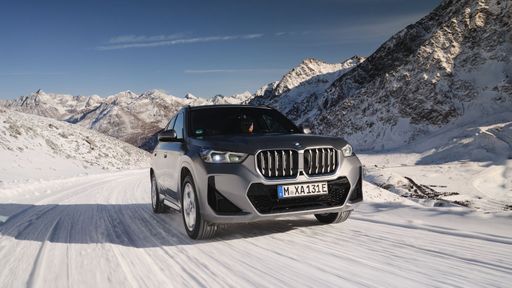 @ BMW Group Press
@ BMW Group Press
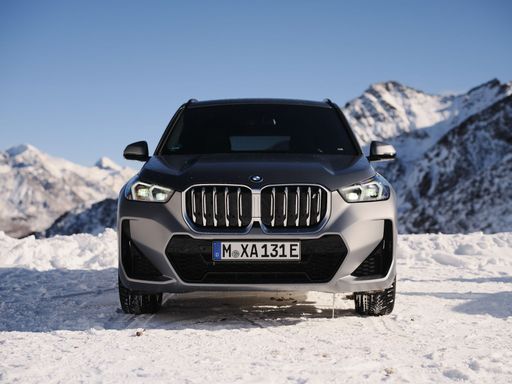 @ BMW Group Press
@ BMW Group Press
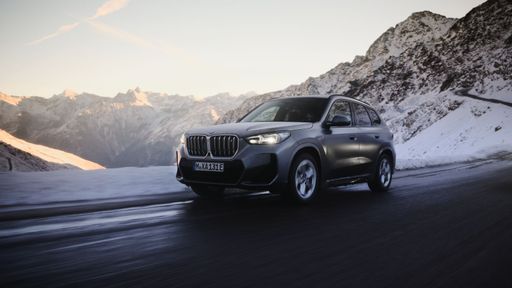 @ BMW Group Press
@ BMW Group Press
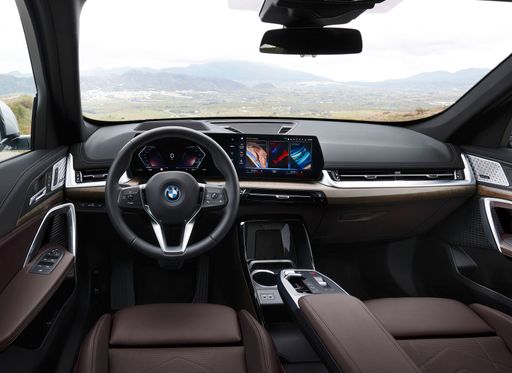 @ BMW Group Press
@ BMW Group Press
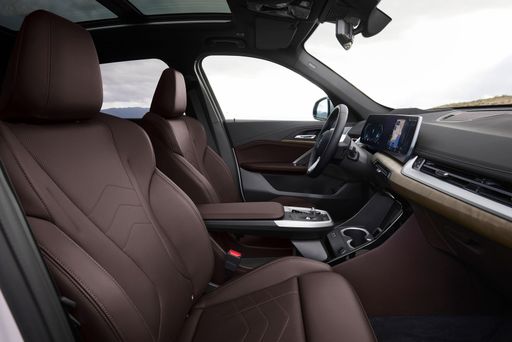 @ BMW Group Press
@ BMW Group Press
Volvo EX30
The Volvo EX30 represents a bold step forward for the brand, combining advanced technology with sustainable design principles. Its sleek and compact exterior belies a spacious interior that offers a premium driving experience. With a focus on safety and innovation, this model reflects Volvo's commitment to shaping the future of urban mobility.
details @ Volvo Cars
@ Volvo Cars
 @ Volvo Cars
@ Volvo Cars
 @ Volvo Cars
@ Volvo Cars
 @ Volvo Cars
@ Volvo Cars
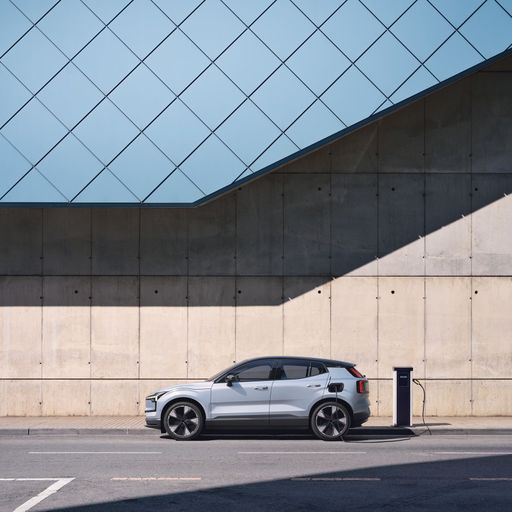 @ Volvo Cars
@ Volvo Cars
 @ BMW Group Press
@ BMW Group Press
|
 @ Volvo Cars
@ Volvo Cars
|
|
|
|
Costs and Consumption |
|
|---|---|
|
Price
41800 - 54600 £
|
Price
33000 - 49100 £
|
|
Consumption L/100km
-
|
Consumption L/100km
-
|
|
Consumption kWh/100km
15.8 - 17.1 kWh
|
Consumption kWh/100km
17 - 18.7 kWh
|
|
Electric Range
436 - 463 km
|
Electric Range
339 - 476 km
|
|
Battery Capacity
64.80 kWh
|
Battery Capacity
49 - 65 kWh
|
|
co2
0 g/km
|
co2
0 g/km
|
|
Fuel tank capacity
-
|
Fuel tank capacity
-
|
Dimensions and Body |
|
|---|---|
|
Body Type
SUV
|
Body Type
SUV
|
|
Seats
5
|
Seats
5
|
|
Doors
5
|
Doors
5
|
|
Curb weight
1940 - 2085 kg
|
Curb weight
1840 - 1960 kg
|
|
Trunk capacity
490 L
|
Trunk capacity
318 L
|
|
Length
4500 mm
|
Length
4233 mm
|
|
Width
1845 mm
|
Width
1838 mm
|
|
Height
1616 mm
|
Height
1550 - 1567 mm
|
|
Max trunk capacity
1495 L
|
Max trunk capacity
1000 L
|
|
Payload
495 kg
|
Payload
370 - 390 kg
|
Engine and Performance |
|
|---|---|
|
Engine Type
Electric
|
Engine Type
Electric
|
|
Transmission
Automatic
|
Transmission
Automatic
|
|
Transmission Detail
Reduction Gearbox
|
Transmission Detail
Reduction Gearbox
|
|
Drive Type
Front-Wheel Drive, All-Wheel Drive
|
Drive Type
Rear-Wheel Drive, All-Wheel Drive
|
|
Power HP
204 - 313 HP
|
Power HP
272 - 428 HP
|
|
Acceleration 0-100km/h
5.6 - 8.6 s
|
Acceleration 0-100km/h
3.6 - 5.7 s
|
|
Max Speed
170 - 180 km/h
|
Max Speed
180 km/h
|
|
Torque
250 - 494 Nm
|
Torque
343 - 543 Nm
|
|
Number of Cylinders
-
|
Number of Cylinders
-
|
|
Power kW
150 - 230 kW
|
Power kW
200 - 315 kW
|
|
Engine capacity
-
|
Engine capacity
-
|
General |
|
|---|---|
|
Model Year
2022 - 2023
|
Model Year
2024 - 2025
|
|
CO2 Efficiency Class
A
|
CO2 Efficiency Class
A
|
|
Brand
BMW
|
Brand
Volvo
|
Is the BMW iX1 offered with different drivetrains?
The BMW iX1 is available as Front-Wheel Drive or All-Wheel Drive.
The prices and data displayed are estimates based on German list prices and may vary by country. This information is not legally binding.
